IOS development
Since the release of iOS7, divination began, what will be iOS 8. It is no secret that many fans of Apple products didn’t like the current version of the mobile operating system. The bulk of complaints relates to the design of the entire interface, as well as many elements. On the eve of the release of iOS 8, the degree of impatience grew continuously and more and more new concepts of appearance with different degrees of confidence appeared. Let's take a look at how Apple’s mobile OS has changed from version to version, and what type and capabilities it has found in its newest incarnation, the eighth.
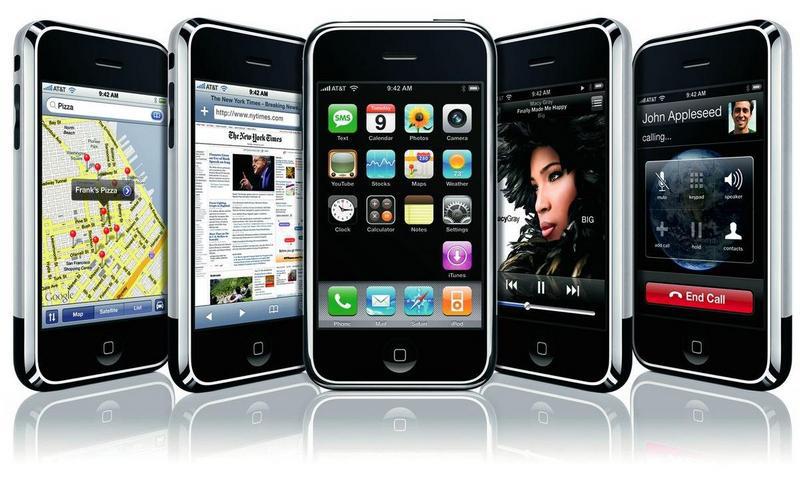
In the now quite distant 2007, the first iPhone came out with an incredible operating system for those times. She could boast of an original interface design, support for multi-touch, convenient mobile Safari browser, built-in Google Maps and the best solutions and finds from the iPod.
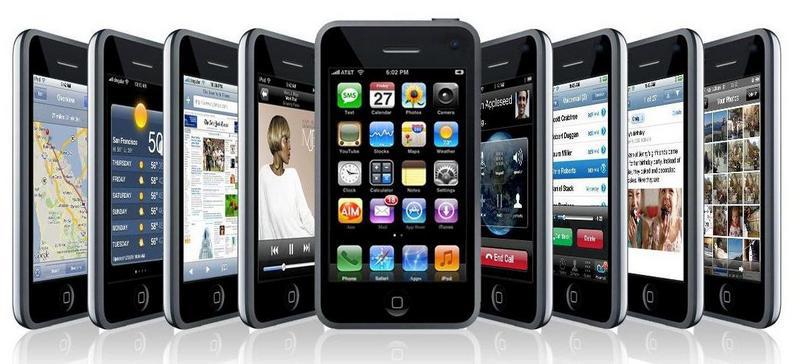
')
In 2008, iOS 2 came out. It marked the beginning of the era of mass creation of applications for the iPhone by third-party developers thanks to the release of the SDK and the launch of the App Store. The iTunes and AppStore icons appeared on the desktop.

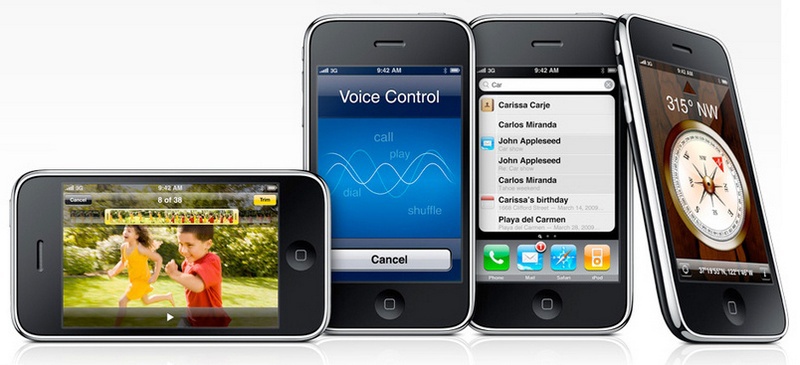
The third version of iOS as a whole looked the same as the second, but it carried a lot of small improvements and changes. For example, push notifications from third-party applications, parental control functions, camera focusing by tapping the screen, a function of purchasing from applications, a universal search, cut / copy / paste functions adapted for a touch screen, appeared. Updated iTunes got the opportunity to purchase multimedia content sent to a smartphone or iPod Touch.
The first iPad on which iOS 3.2 was installed went on sale. The interface of this operating system was adapted to a larger screen, so henceforth application developers needed to create two versions: for iPhone and iPad.

The fourth version of iOS has received an updated design in blue-gray tones, with “flattened” elements. Appeared FaceTime application, the ability to create folders for better organization of icons on the desktop, spell checker, a single email application. But the most important change was the introduction of multitasking. In version 4.1, the Game Center application appeared, in 4.2.1 - AirPlay. In version 4.3, it became possible to use the device as a WiFi modem, AirPlay was opened for third-party applications, and in iTunes it became possible to share its content via WiFi. There are applications such as iMessage (instead of SMS), voice notes and a compass, the design of the lower quick launch panel has changed, and the desktop has received a “wallpaper”:
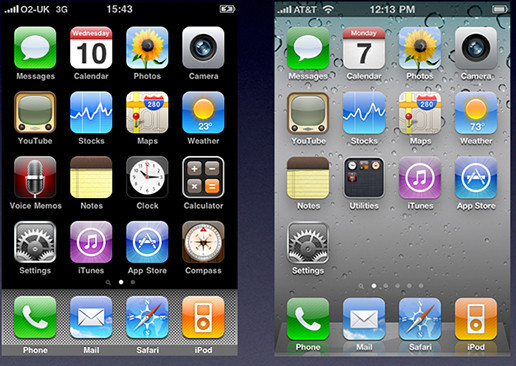

The interface design of the fifth version of the OS as a whole was similar to the previous one. Interfaces Notification Center, iMessage, settings pages for wireless connection and iTunes syncing via WiFi were reworked. But the loudest and most interesting innovation was the virtual assistant Siri.

The new version of the iPhone received a screen with a different aspect ratio, so a number of icons were added to the desktop:
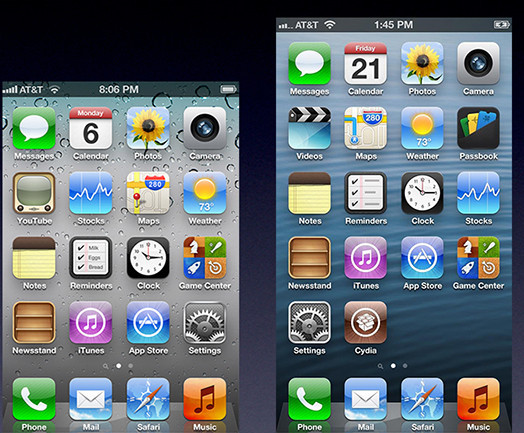
In connection with the transformation of Google into the main rival, their map service was replaced by Apple Maps. With the introduction of this application, many complaints about a large number of errors have appeared:

The application for viewing YouTube has also been excluded, Siri and Notification Center have been improved, FaceTime has been optimized in the mobile Internet mode, as well as a number of minor changes and improvements.
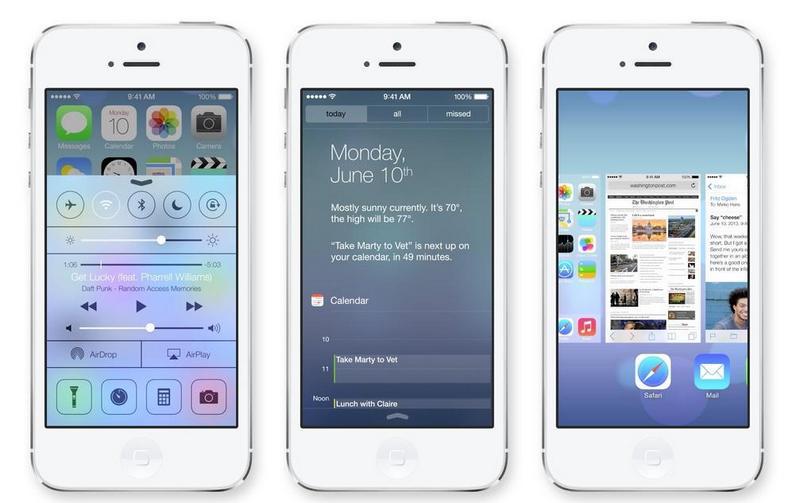
Apple substantially redesigned the interface design, making it "flat" and sketchy in a vector style.
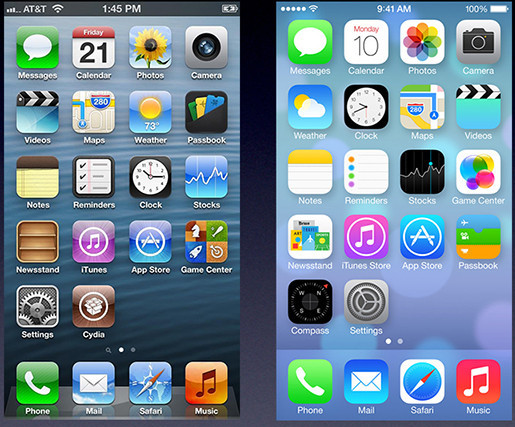

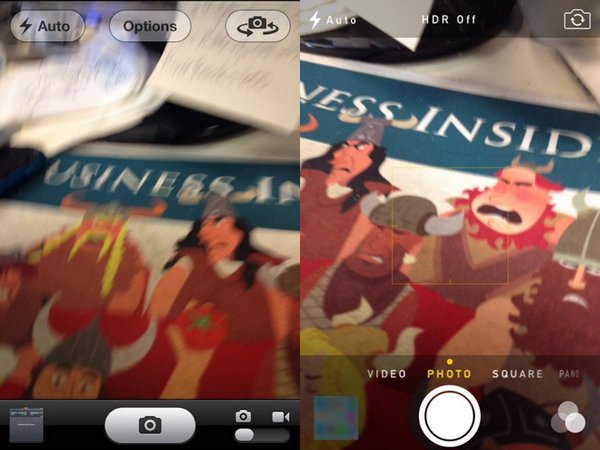
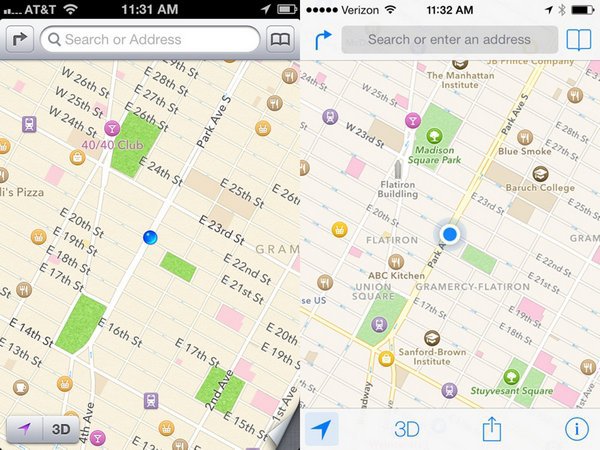
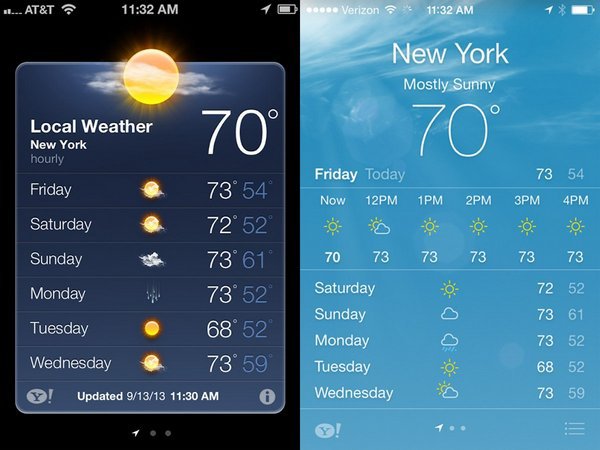
The interface not only became flat, the color gamut was changed, a translucent background blur appeared at the menu and windows, animated backgrounds. A number of applications have been updated, including Safari, Siri, AirDrop, Camera. There is a new service iTunes Radio, designed to search for music.
The new version of iOS we will see only on June 2, but today the Internet is full of rumors and conjectures about what awaits us. Consider the most trustworthy of them.
Judging by the various screenshots, the interface has not been changed and will remain the same as in iOS 7.
The system performance will be significantly improved, in particular, the speed of launching and closing applications will be increased, and the response time to user actions will be reduced.
The iPad will now be able to place on the screen simultaneously two running applications:

Moreover, in this mode, dragging objects (text, images, links) from one application to another is possible.
In iOS, the Shazam music recognition service, developed by the company of the same name, will be integrated.
A new Healthbook application will appear that allows you to store in a visual form all the information about the health of the owner and his sporting achievements. Well, the fashion for all kinds of fitness recorders did not bypass Apple.

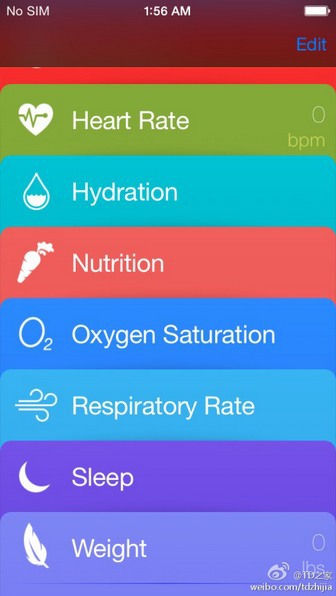
Much work has been done to improve Apple Maps. The developer paid special attention to the quality of display of such important objects as railway stations, bridges, airports and highways. Reworked the Transit function, which previously worked quite poorly.

Notification Center will receive a new, simplified structure, making it easier to navigate the application.
Recorder interface has been redesigned, it has become more convenient and understandable.
The iTunes Radio service will turn into a separate application, and the changes in the interface will be minimal:
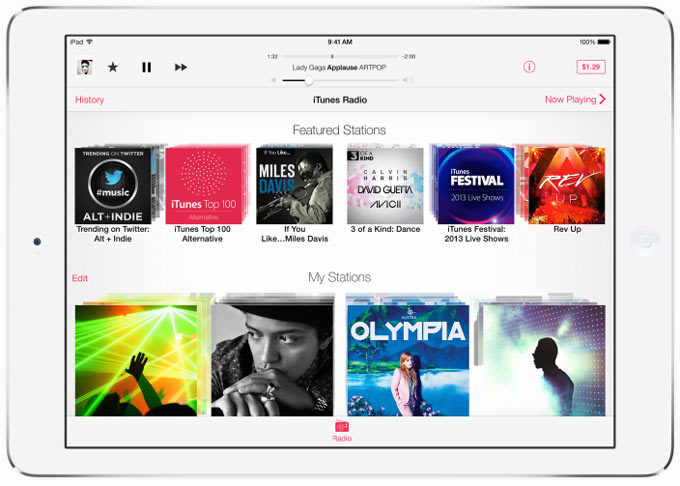
It is possible that in iOS 8 there will be mobile versions of the TextEdit and Preview applications, with which you can view documents in iCloud.
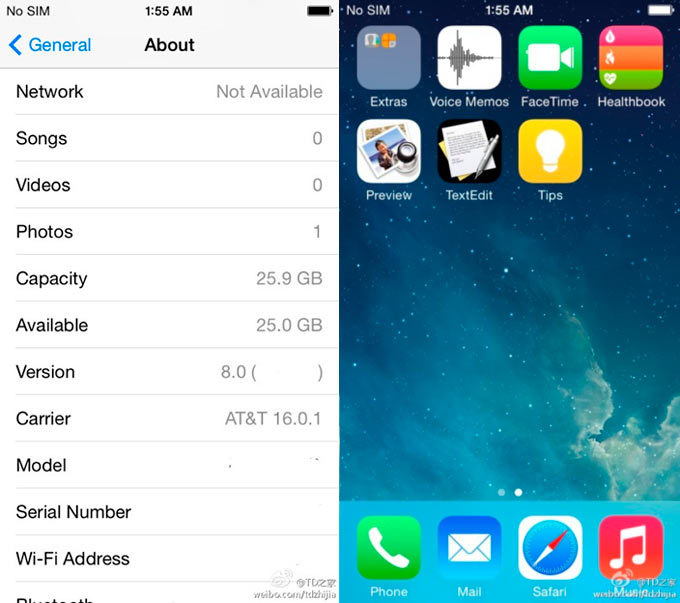
On June 2, the online broadcast of the Apple Worldwide Developers Conference 2014 will be conducted on hi-tech.mail.ru, so everyone will be able to find out at the same time with the whole world what this brainchild of Steve Jobs has prepared for us this year.
iOS 1.x

In the now quite distant 2007, the first iPhone came out with an incredible operating system for those times. She could boast of an original interface design, support for multi-touch, convenient mobile Safari browser, built-in Google Maps and the best solutions and finds from the iPod.
iOS 2.x

')
In 2008, iOS 2 came out. It marked the beginning of the era of mass creation of applications for the iPhone by third-party developers thanks to the release of the SDK and the launch of the App Store. The iTunes and AppStore icons appeared on the desktop.

iOS 3.x

The third version of iOS as a whole looked the same as the second, but it carried a lot of small improvements and changes. For example, push notifications from third-party applications, parental control functions, camera focusing by tapping the screen, a function of purchasing from applications, a universal search, cut / copy / paste functions adapted for a touch screen, appeared. Updated iTunes got the opportunity to purchase multimedia content sent to a smartphone or iPod Touch.
The first iPad on which iOS 3.2 was installed went on sale. The interface of this operating system was adapted to a larger screen, so henceforth application developers needed to create two versions: for iPhone and iPad.
iOS 4.x

The fourth version of iOS has received an updated design in blue-gray tones, with “flattened” elements. Appeared FaceTime application, the ability to create folders for better organization of icons on the desktop, spell checker, a single email application. But the most important change was the introduction of multitasking. In version 4.1, the Game Center application appeared, in 4.2.1 - AirPlay. In version 4.3, it became possible to use the device as a WiFi modem, AirPlay was opened for third-party applications, and in iTunes it became possible to share its content via WiFi. There are applications such as iMessage (instead of SMS), voice notes and a compass, the design of the lower quick launch panel has changed, and the desktop has received a “wallpaper”:

iOS 5.x

The interface design of the fifth version of the OS as a whole was similar to the previous one. Interfaces Notification Center, iMessage, settings pages for wireless connection and iTunes syncing via WiFi were reworked. But the loudest and most interesting innovation was the virtual assistant Siri.
iOS 6.x

The new version of the iPhone received a screen with a different aspect ratio, so a number of icons were added to the desktop:

In connection with the transformation of Google into the main rival, their map service was replaced by Apple Maps. With the introduction of this application, many complaints about a large number of errors have appeared:

The application for viewing YouTube has also been excluded, Siri and Notification Center have been improved, FaceTime has been optimized in the mobile Internet mode, as well as a number of minor changes and improvements.
iOS 7.x

Apple substantially redesigned the interface design, making it "flat" and sketchy in a vector style.





The interface not only became flat, the color gamut was changed, a translucent background blur appeared at the menu and windows, animated backgrounds. A number of applications have been updated, including Safari, Siri, AirDrop, Camera. There is a new service iTunes Radio, designed to search for music.
iOS 8.x: rumors and guesses
The new version of iOS we will see only on June 2, but today the Internet is full of rumors and conjectures about what awaits us. Consider the most trustworthy of them.
Judging by the various screenshots, the interface has not been changed and will remain the same as in iOS 7.
The system performance will be significantly improved, in particular, the speed of launching and closing applications will be increased, and the response time to user actions will be reduced.
The iPad will now be able to place on the screen simultaneously two running applications:

Moreover, in this mode, dragging objects (text, images, links) from one application to another is possible.
In iOS, the Shazam music recognition service, developed by the company of the same name, will be integrated.
A new Healthbook application will appear that allows you to store in a visual form all the information about the health of the owner and his sporting achievements. Well, the fashion for all kinds of fitness recorders did not bypass Apple.


Much work has been done to improve Apple Maps. The developer paid special attention to the quality of display of such important objects as railway stations, bridges, airports and highways. Reworked the Transit function, which previously worked quite poorly.

Notification Center will receive a new, simplified structure, making it easier to navigate the application.
Recorder interface has been redesigned, it has become more convenient and understandable.
The iTunes Radio service will turn into a separate application, and the changes in the interface will be minimal:

It is possible that in iOS 8 there will be mobile versions of the TextEdit and Preview applications, with which you can view documents in iCloud.

On June 2, the online broadcast of the Apple Worldwide Developers Conference 2014 will be conducted on hi-tech.mail.ru, so everyone will be able to find out at the same time with the whole world what this brainchild of Steve Jobs has prepared for us this year.
Source: https://habr.com/ru/post/224715/
All Articles